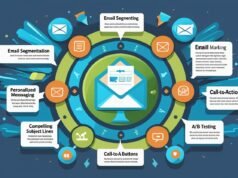In the competitive business world of today, consistent cash flow is the very lifeblood of any thriving business. You may be a small company or a large firm; cash flow guarantees that you can pay your suppliers, reward employees, make investments in expansion, and keep operations running. Timely payments by customers or clients are one of the most important elements that have a direct influence on cash flow. Yet, receiving payments on-time is much easier said than done.
Delays, forgetfulness, or even miscommunication can disrupt financial stability. This is where payment reminder automation becomes a game-changer. With automated systems in place, businesses can significantly reduce payment delays, improve client relationships, and ensure predictable income. In this article, we explore why timely payments are essential, the consequences of delayed payments, and how payment reminder automation can transform your cash flow management.
Why Timely Payments Matter
- Facilitates Business Continuity
On-time payments allow businesses to have a stable cash flow, which is fundamental for daily operations. Rent, salaries, electricity bills, and purchases of inventory all rely on working capital. If payments from clients are made on time, companies are in a position to pay their bills without seeking emergency advances or credit.
- Fosters Stronger Relations
Prompt payments build confidence between companies and their stakeholders, such as vendors, employees, and partners. Conversely, slow payments may generate tension, lost business, and harmed reputations.
- Prevents Penalties and Interest
Most vendors and service providers impose interest or late charges for past-due invoices. These avoidable charges can rapidly mount and absorb your profits. Payment on time avoids this risk.
- Helps Preserve Creditworthiness
Financial institutions track a company’s cash flow trends and payment habits. Keeping up with payments enhances your credit score, which in turn can affect your potential to access loans or funding in the future.
- Facilitates Strategic Planning
With consistent cash flow, companies can project future revenues, make expansion plans, invest in marketing, or acquire new machinery with certainty. Financial reliability is the basis of strategic planning.
The High Cost of Delayed Payments
Despite the clear benefits, many businesses still suffer from payment delays. According to industry reports, small businesses are vulnerable, with invoices often being paid for weeks—or even months—late.
Here are some common impacts of late payments:
- Cash Flow Crunches: Businesses may face difficulties paying their own bills, leading to a cycle of financial stress.
- Operational Delays: Limited cash can halt production, delivery, or service execution.
- Lost Opportunities: Companies might miss out on early-bird discounts or investment opportunities due to lack of funds.
- Damaged Credit: Repeated delays in payments received may force companies to delay their own payments, which is reflected poorly on their credit profile.
What Is Payment Reminder Automation?
Payment reminder automation involves the use of software or online tools to send reminders to customers about pending or due invoices automatically. These reminders can be emails, SMS, push messages, or even automated calls, reminding customers without anyone’s intervention.
Key Features of Automated Payment Reminders:
- Scheduled Reminders: Create automated reminders prior to the due date, on the due date, and post-due date.
- Custom Messaging: Tailor reminder messages to your brand voice.
- Multiple Channels: Deliver reminders across multiple communication channels like email, SMS, or in-app messages.
- Recurring Billing Integration: Associate reminders with recurring bills for smooth monthly or annual billing cycles.
- Analytics and Reporting: Monitor which clients habitually pay late and modify follow-up strategies based on this.
Benefits of Payment Reminder Automation
- Lower Administrative Burden
Tracking payments, sending reminders, and following up manually takes time. Automation takes the heat off your finance team and allows them to concentrate on more senior financial tasks.
- More On-Time Payments
Automated systems remind clients at the ideal time, minimizing the likelihood of client forgetfulness. Firms generally see increased on-time payment levels after using such tools.
- Better Professionalism
Automated reminders are professional, on-time, and reliable. They obviate the embarrassment that may arise from repeated manual reminders.
- Cost Savings
Late payments are minimized, which means less need for loans or credit. You also save costs related to manual invoicing and follow-ups.
- Improved Cash Flow Forecasting
With more stable payment cycles, companies can more accurately forecast revenue and make better financial decisions.
How to Implement Payment Reminder Automation
Instituting payment reminder automation is easier than it is. Here’s how to do it in a step-by-step manner:
Step 1: Select the Right Tool
Tools that are popular for payment reminder automation are:
- QuickBooks
- FreshBooks
- Zoho Books
- Xero
- Wave
- Stripe and PayPal (for integrated reminders)
Select software that gets integrated well with your current accounting system.
Step 2: Create Reminder Schedules
Set when and how frequently reminders are to be sent:
- 3–5 days before due date
- On due date
- 3 days after due date
- Weekly thereafter until payment is made
Step 3: Personalize Communication
Make your reminder messages personalized using:
- Client’s name and invoice number
- Amount due and due date
- Payment link
- Friendly yet firm tone
Step 4: Monitor and Optimize
Monitor the effectiveness of reminders through the tool’s analytics:
- Are clients responding?
- Which clients tend to delay payments?
- Do you need to alter reminder frequency or words?
Best Practices for Effective Payment Reminders
- Be Clear and Concise: Clearly state the amount, due date, and invoice number.
- Keep a Friendly Tone: Don’t be aggressive sounding—most delays are caused by forgetfulness.
- Provide Payment Options: Make it convenient to pay by adding links or QR codes.
- Follow Up Regularly: Avoid missing follow-ups using automated scheduling.
- Provide Incentives: Give small discounts for early payments to promote punctuality.
Case Study: Small Business Success with Automation
Case Study: Luna Design Studio
Luna Design Studio is a small web development firm that was plagued by delayed payments from clients. Their accountant dedicated 6 hours every week to chasing down unpaid invoices. After implementing a payment reminder automation system that synced with their invoicing software, Luna saw their percentage of past-due invoices drop 45% within the first three months. The automation saved them 6+ hours of their week and made their cash flow so consistent that they were able to invest in advertising and hire new employees.
Challenges and How to Overcome Them
- Client Pushback
Certain clients get irritated with repeated reminders. To prevent tension, let clients choose how often they want notifications.
- Over-Reliance on Automation
Although automation does most of the reminders, there should be personal touch for long-time clients. Don’t be shy to call them directly if necessary.
- Initial Setup Time
Configuring automated workflows is time-consuming, particularly for companies that are new to the tools. But the long-term payoff in time saved and benefits far exceeds the effort.
The Future of Payment Reminder Automation
With the developments in AI and machine learning, payment reminder systems will become more intelligent. Trends for the future are:
- AI-Powered Personalization: Dynamic timing of reminders according to client behavior.
- Predictive Analytics: Suggesting clients who tend to delay payments.
- Voice & Chatbot Integration: Sending reminders through WhatsApp, Messenger, or voice assistants.
- Global Currency Integration: Aligning reminders for global clients with currency and time zone factors.
Conclusion
In a cash flow-driven world where a company’s survival and success depend on it, timely payment is not a nicety—it is a necessity. Manual follow-ups in 2025 are not efficient or sustainable options anymore. Payment reminder automation enables organizations to make finances predictable, decrease delay times, and concentrate on expansion rather than tracking payments.
Through the use of automation tools and best practices, your business can make a proactive move towards healthy finances and more robust client relationships.








[…] matters even more because you are leaving it to the external organization to make sense of your business universe. Poor quality data can result in poor strategy, wasted resources, and tarnished […]